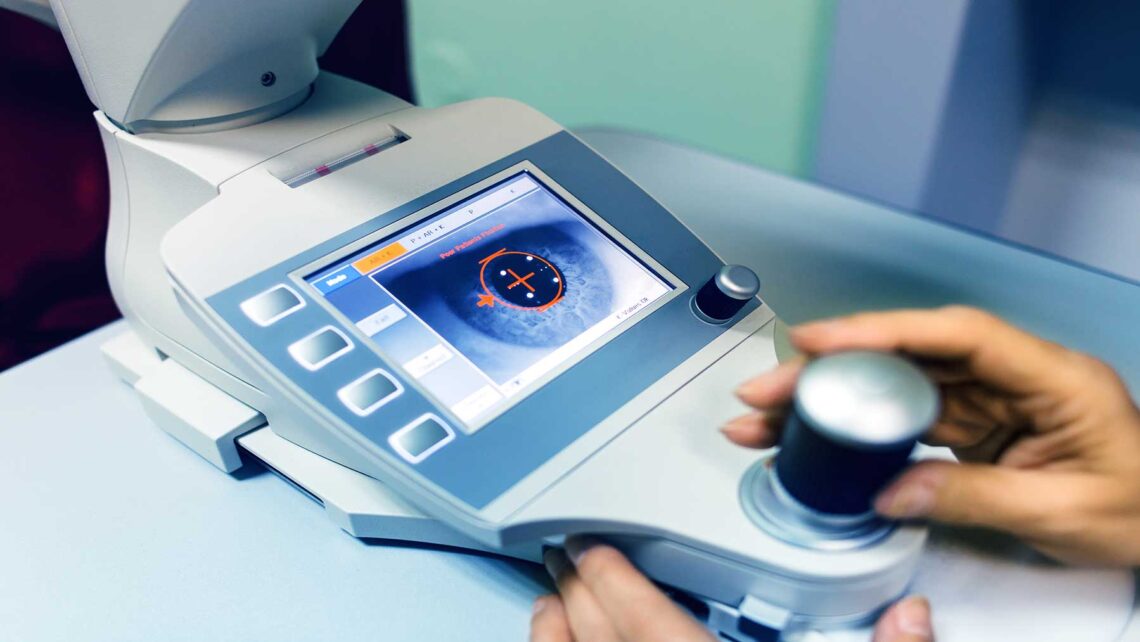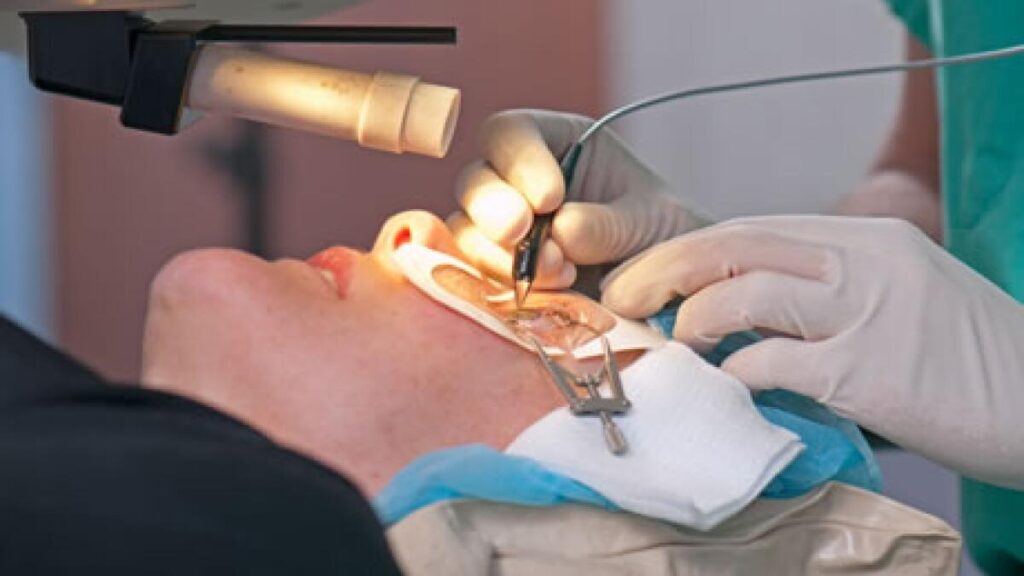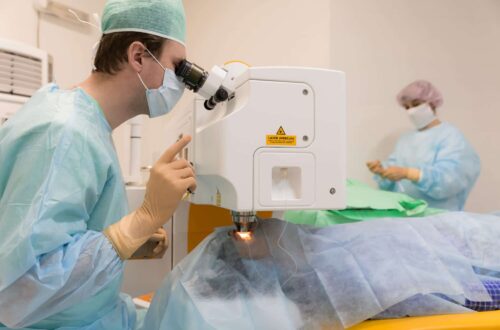
6 Effective Vision Correction Alternatives To LASIK Eye Surgery
You likely consider vision correction solutions if you struggle with vision problems like astigmatism.
The standard type of refractive vision correction surgery you will encounter is LASIK surgery. For over 20 years, LASIK surgery has been used to treat farsightedness, nearsightedness and astigmatism. Modern LASIK surgery use lasers to create a flap of corneal tissue. Then, the surgeon will use a laser to reshape your cornea gently. This procedure takes 15-20 minutes to complete and is painless. Visit: https://www.personaleyes.com.au to get more about treatment of farsightedness, nearsightedness and astigmatism.
While LASIK can treat various vision problems, not everyone is a candidate for LASIK eye surgery. For example, patients with corneal damage or scarring are not ideal LASIK surgery candidates. Thankfully, there are vision correction solutions you can consider when looking for LASIK alternatives.
Keep reading about Carrot LASIK & Eye Center’s vision correction surgeries to find the ideal LASIK alternatives for your needs.
Best LASIK Alternatives For Vision Correction
1. SMILE
The first alternative to the LASIK procedure is SMILE (small incision lenticule extraction), considered a less aggressive alternative to LASIK. One similarity between the SMILE procedure and LASIK is the use of a laser.
Surgeons use a laser to make a corneal flap during the LASIK procedure, while SMILE doesn’t. Instead, the SMILE procedure uses one laser to reshape a lens, called a lenticule, within the cornea. This lenticule is removed with a small incision, enabling the cornea to take on a new shape.

Is SMILE a LASIK surgery alternative?
SMILE procedure is a common LASIK alternative for patients in certain professions, like athletes. Because a sportsman is at risk of being struck in the eyes, they can be at risk of flap dislocation. While flap displacement is rare after LASIK, it doesn’t occur after SMILE because the surgeon hasn’t made any flap.
Another reason the SMILE procedure is an alternative to consider is the conditions it treats. Similar to LASIK, surgeons use SMILE to address nearsightedness.
2. RLE
RLE (refractive lens exchange) is a lens refractive surgery. RLE procedure addresses issues in patients whose vision changes due to ageing.
The procedure used for the RLE procedure is similar to the cataract procedure. The RLE surgery begins by removing the natural lens of the eyes. Your doctor will replace the lens with the intraocular lens or IOL. Unlike cataract surgery, RLE removes a clear lens, while cataract surgery removes a cloudy lens.
Is RLE a LASIK alternative?
If you are not eligible for LASIK surgery, RLE may be an alternative. There’s a wide range of IOLs available that can treat various conditions. A patient with astigmatism but doe not qualify for the LASIK procedure may benefit from the RLE procedure.
Another condition RLE procedure can help treat as a LASIK surgery alternative is a presbyopia. Presbyopia is an infection where the eyes’ ability to focus on close objects worsens. With RLE, you can improve your eyes’ clarity at all distances and minimize issues like glare or halos associated with night driving.
3. ICL
ICL (implantable Collamer lens) is a refractive vision correction solution comparable to RLE by inserting a lens into the eyes. However, ICL differs from the RLE procedure because the implanted lens works with the eyes’ natural lens instead of changing it.
The ICL involves the insertion of an IOL into the eyes through a small incision. Surgeons lace the ICL between the iris and the eye’s natural lens. This procedure is brief, taking 15-20 minutes to complete.
Is ICL an alternative to LASIK?
ICL can be a suitable alternative to LASIK surgery for patients that do not qualify for LASIK surgery. Specifically, a patient who does not allow for a LASIK procedure due to dry eyes or thin corneas can benefit from ICL. ICL can address astigmatism plus LASIK surgery.
4. PRK procedure
PRK (photorefractive keratectomy) is a refractive laser surgery before LASIK. Because modern LASIK procedure is more comfortable than PRK, it is more common than PRK.
During the PRK, a surgeon uses a laser to eliminate the cornea’s thin layer. This step takes up to 40 seconds to complete. Next, the surgeon will use the excimer laser to reshape the cornea. In total, PRK takes five to twenty minutes per eye to complete.
After the surgery, non-prescription contacts are placed over each eye to ensure the surgical site remains neat.
Is PRK a LASIK surgery alternative?
PRK is an excellent alternative to LASIK surgery that can solve similar problems. PRK can be used to treat farsightedness, nearsightedness, and astigmatism. A patient may consider PRK procedure when addressing these conditions if they are not a good LASIK candidate. For example, patients with thin corneas or dry eyes wouldn’t qualify for LASIK surgery but could still consider the PRK procedure.

5. Laser Epithelial Keratomileusis (LASEK) surgery
Laser epithelial keratomileusis is similar to LASIK and PRK procedures. It’s a great alternative. LASEK procedure is ideal for people with thin corneas, a factor that disallows them from LASIK eye surgery.
The epithelium is removed and softened during LASEK with a diluted alcohol solution. It’s then folded back. The corneal shape is altered with the excimer laser, and the epithelial flap is replaced. It is held into position by a contact lens to facilitate healing.
6. Intraocular Lens Implants
The intraocular lens implant is an artificial lens inserted into the eye to replace the natural lens. IOL is commonly used to correct cataracts and is an effective alternative to LASIK surgery.
The lens is made of transparent plastic material and comes in four types:
Monofocal IOL. That is the most prevakebt, and it’s fixed. For example, you can only see distant objects and might need eyeglasses for close things.
Multifocal implants. These allow you to see tiny objects at different distances. Sometimes, they cause halos or glares around bright lights.
Accommodating IOLs. These are flexible and work like natural eye lenses. With accommodating IOLs, you are less likely to need reading eyeglasses.
Toric IOLs. These are lenses used for cataract surgery to reduce the effects of postoperative astigmatism.
In Conclusion
Finding the proper vision correction solution will depend on your ultimate needs. What’s the current health of your eye? Do you have conditions like nearsightedness, astigmatism or farsightedness?
To answer those questions and find suitable vision solutions, consult skilled ophthalmologists who use an eye diagnostics exam called advanced ocular analysis. The surgery centre could also use the latest technology (AOA) to examine your eye’s health comprehensively. Once this examination is done, the ophthalmologists can recommend the best vision correction surgery that fits your needs.




